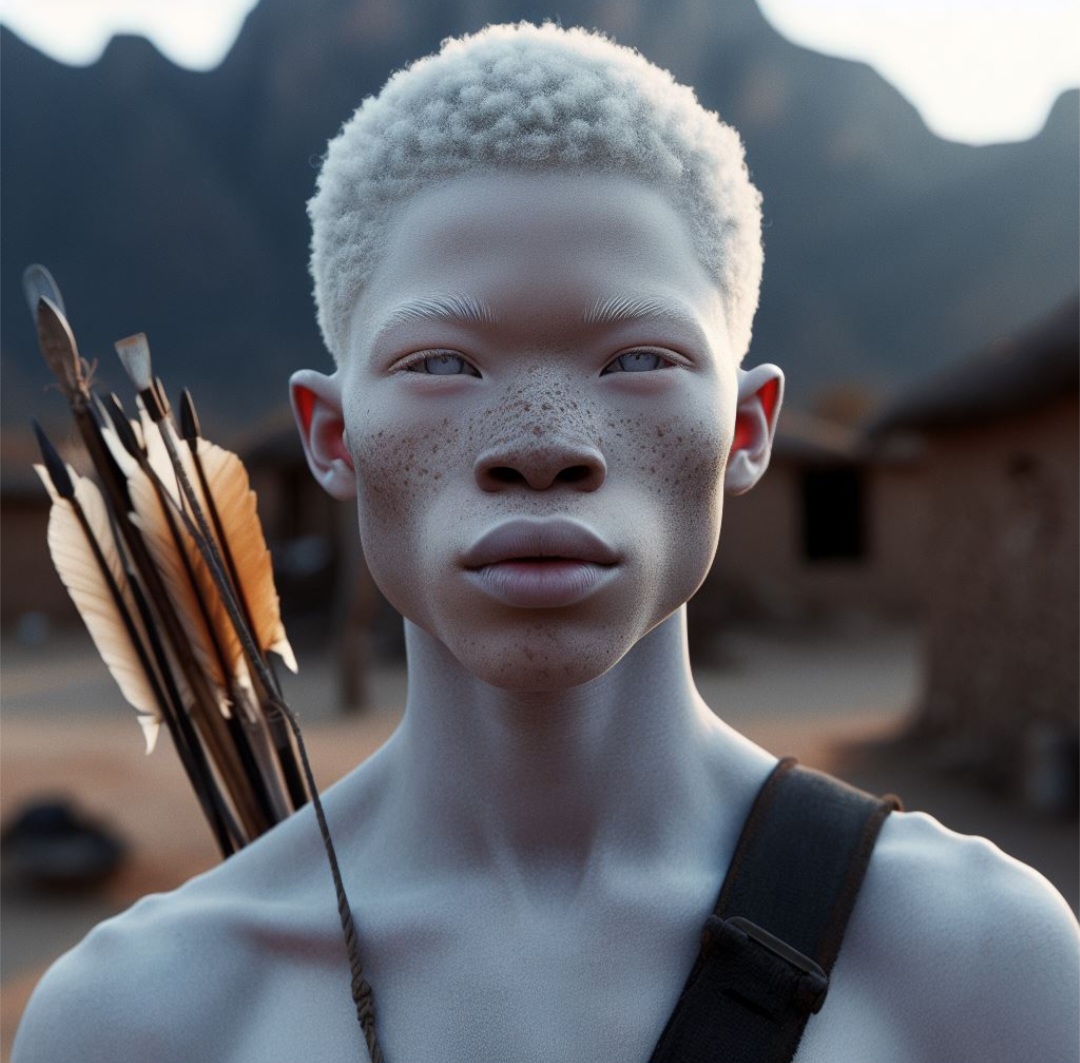
In the heart of Lundazi, a small town nestled amidst the rolling hills of Zambia, there existed a community that bore the weight of an ancient struggle. Their skin, like the delicate petals of a wilting flower, lacked the protective pigment that shielded others from the sun’s relentless gaze. They were the albinos—the children of the sun, yet paradoxically, its most vulnerable victims.
The Sun’s Unyielding Embrace
Kwame, a young man with ivory skin and silver hair, knew the sun’s touch all too well. His days were a delicate dance between seeking shade and braving the open fields. The sun, unrelenting in its pursuit, etched its fiery signature upon his skin. Kwame’s grandmother, Nia, would often recount tales of their ancestors—the albino warriors who fought not with swords, but with resilience and defiance.
The Rituals of Fear
Beyond the scorching sun, another menace lurked—the ritual killings. In the dead of night, whispers echoed through the thatched huts. The villagers spoke of shadowy figures, masked and malevolent, who sought albinos for their macabre ceremonies. They believed that albino body parts possessed mystical powers—a twisted belief that fueled terror.Kwame’s sister, Sibongile, vanished one moonless night. Her absence left an emptiness that no sunrise could fill. The villagers mourned silently, their grief hidden behind stoic expressions. Kwame vowed to uncover the truth—to unravel the web of fear and superstition that ensnared his people.
The Burden of Vigilance
Living with albinism was an art of perpetual vigilance. Kwame’s eyes darted from shadow to shadow, his ears attuned to every rustle in the grass. He wore a cloak of suspicion, for danger could emerge from the familiar faces of neighbors or the distant howl of hyenas. His shoulders bore the weight of ancestral fears—the legacy of those who had vanished into the night.
The Unvarnished Truth
As a storyteller, Kwame’s duty transcended mere words. He painted vivid pictures with his voice, weaving tales of courage and sorrow. Gathered around the communal fire, the villagers listened—a captive audience yearning for hope. Kwame spoke of Sibongile’s laughter, her dreams, and the injustice that stole her away. He dared to name the darkness—the ritual killers who preyed upon their vulnerability.
The Dawn of Change
Word spread beyond Lundazi. Activists rallied, demanding justice. Kwame’s voice echoed in distant cities, reaching the ears of those who held power. The sun, once a merciless adversary, now witnessed a different battle—one fought with pens, petitions, and unwavering resolve. Schools taught acceptance, and clinics dispensed sunscreen alongside medicine.
And so, the albinos of Lundazi stepped into the light, their skin adorned with defiance. Kwame’s storytelling became a beacon—a testament to resilience, a plea for understanding. The ritual killings waned, replaced by a fragile peace. The sun still blazed, but it no longer consumed them.In the quiet nights of Lundazi, Kwame’s voice carried across the hills. His stories were not mere tales; they were the unvarnished truth—the legacy of a people who refused to be shadows. And as the sun dipped below the horizon, it cast long shadows upon the land, each one a testament to their endurance.
Please Note: This fictional story draws inspiration from the real struggles faced by albinos in Africa. It aims to shed light on their challenges and honor their resilience. 🌅🌿